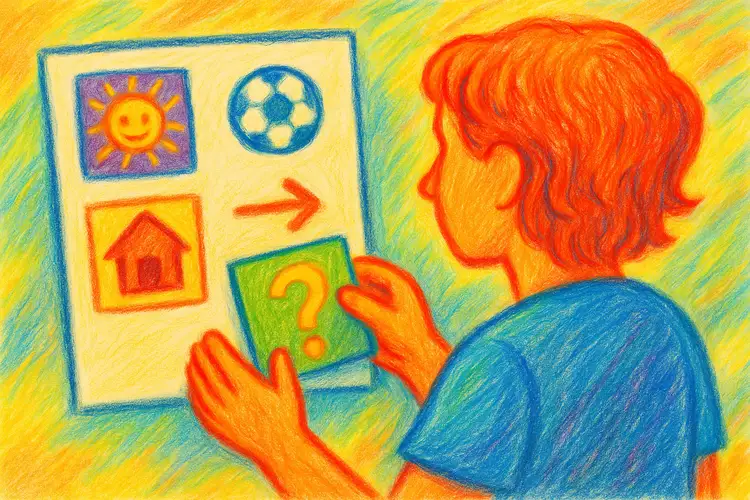Handling Unexpected Changes with Visual Schedules
Published {$created} by Carsten Blum
Most children like predictability, but for children with autism, ADHD, or anxiety, unexpected changes can feel overwhelming.A canceled playdate, a delayed bus, or a different teacher can quickly trigger stress or meltdowns.
Visual schedules help, but only if they are flexible enough to handle changes. With the right strategies, they can guide children through surprises without losing the sense of security.

How Visual Schedules Can Adapt
Show alternatives: Instead of only one plan, include “if/then” options.
Use placeholders: Add a symbol for “surprise” or “change.”
Support transitions: Arrows and replacement cards make adjustments clear.
Reduce uncertainty: Even if the plan changes, the child still sees structure.
Common Situations with Unexpected Changes
School bus arrives late
Cancelled sports practice
Doctor appointment runs longer than planned
Teacher or caregiver is absent
Weather forces indoor instead of outdoor play
Flexible Visual Support Strategies
Add a “change card” – a simple icon (like a question mark or star) that signals something will be different.
Prepare backup symbols – alternative activities that can replace the original.
Keep routines anchored – maintain predictable anchors like meals, bedtime, or circle time.
Practice in advance – role-play small changes using the visual schedule.
Use positive framing – present changes as new opportunities.
Example Flexible Schedule
Time | Activity | Backup |
|---|---|---|
10:00 | ⚽ Outdoor play | 🎨 Indoor drawing |
12:00 | 🍽️ Lunch | (no change) |
14:00 | 🚍 Bus trip | 🏠 Stay home activity |
Tips for Success
Stay calm: Children mirror adult reactions to changes.
Keep visuals handy: Portable cards or an app make swaps easy.
Explain with visuals: Use arrows or cover cards to mark the update.
Reward flexibility: Praise when the child accepts a change calmly.
Benefits Beyond Daily Plans
By practicing flexibility with visual schedules, children learn to handle uncertainty in other parts of life too.They build resilience, reduce anxiety, and gain confidence that changes don’t mean chaos.
Summary
Unexpected changes are part of life — but they don’t have to be overwhelming.With flexible visual schedules, children can adapt to surprises while still feeling secure and supported.
Next step: Create a simple “change card” to introduce during small daily adjustments.